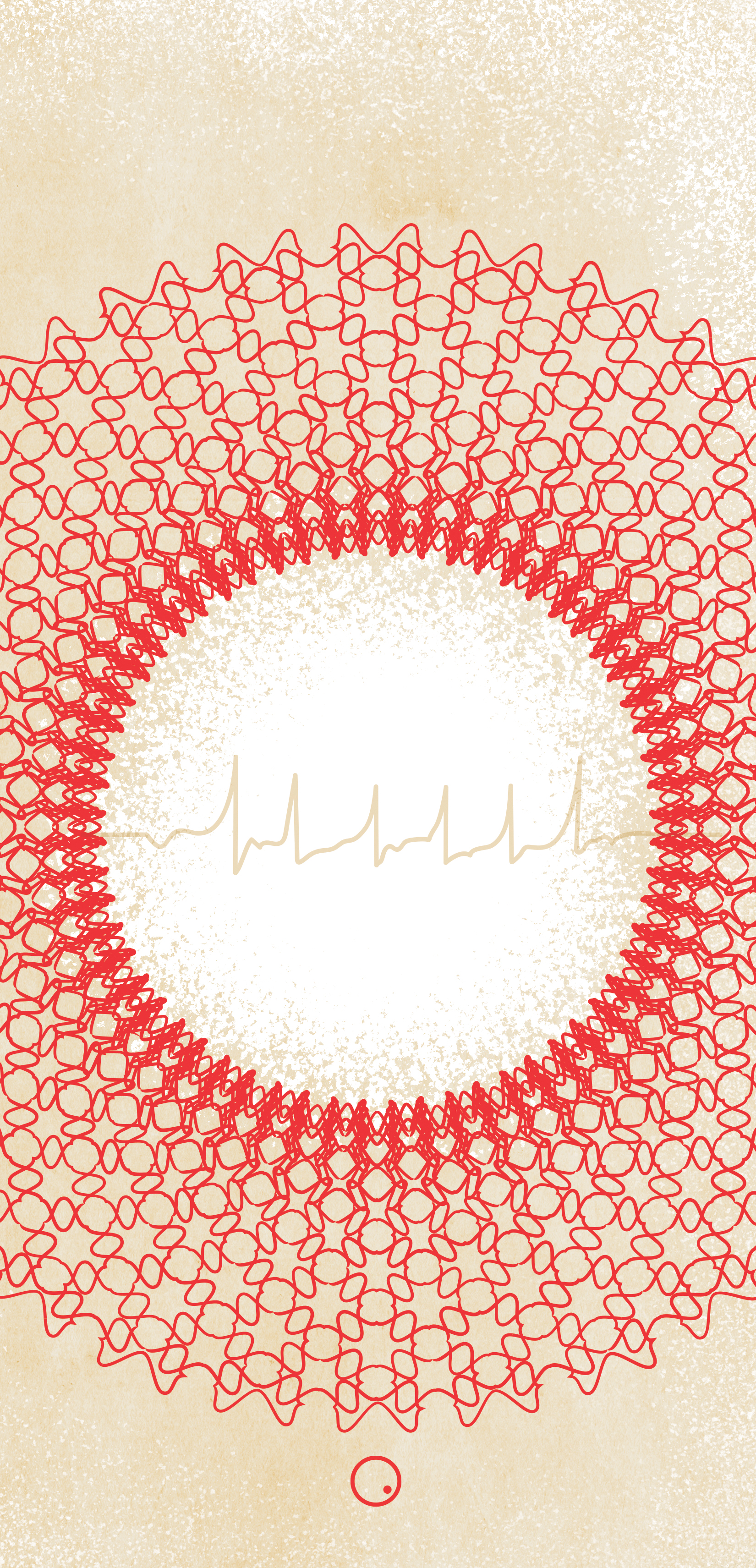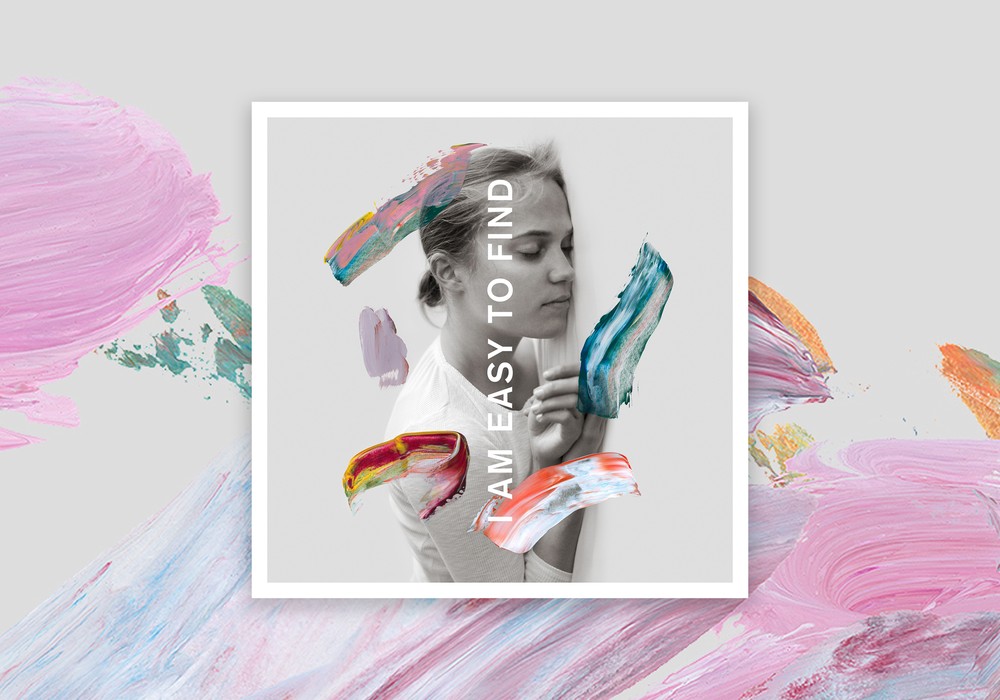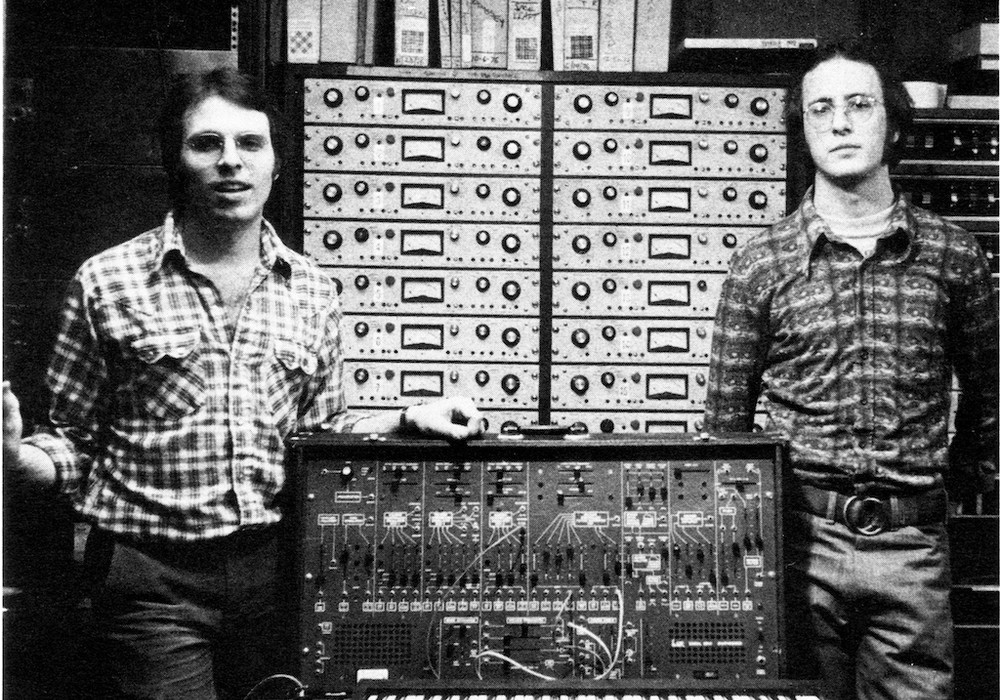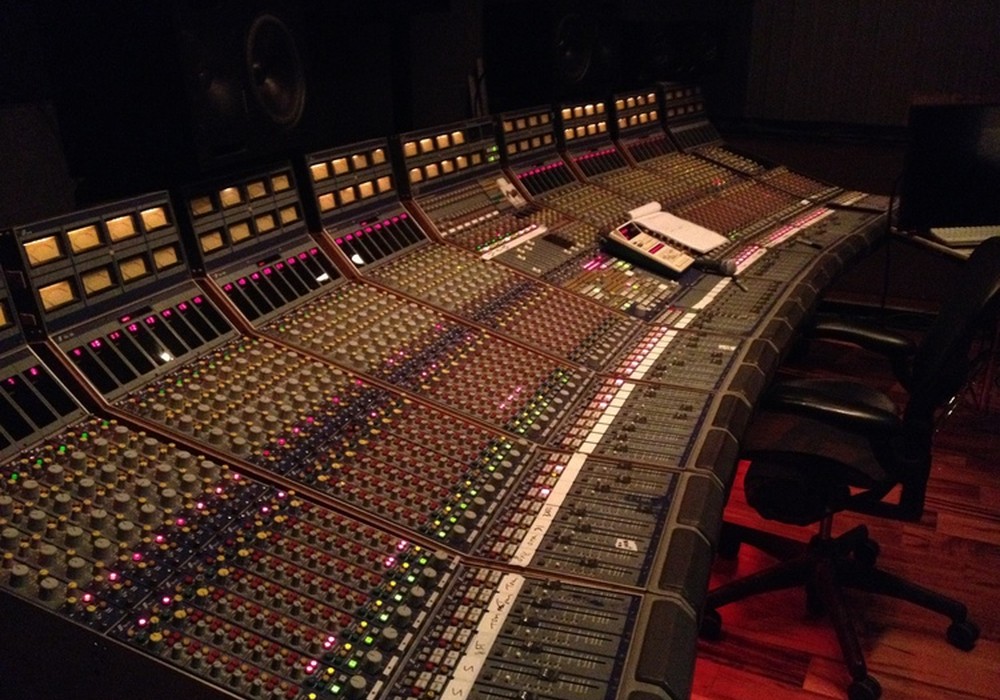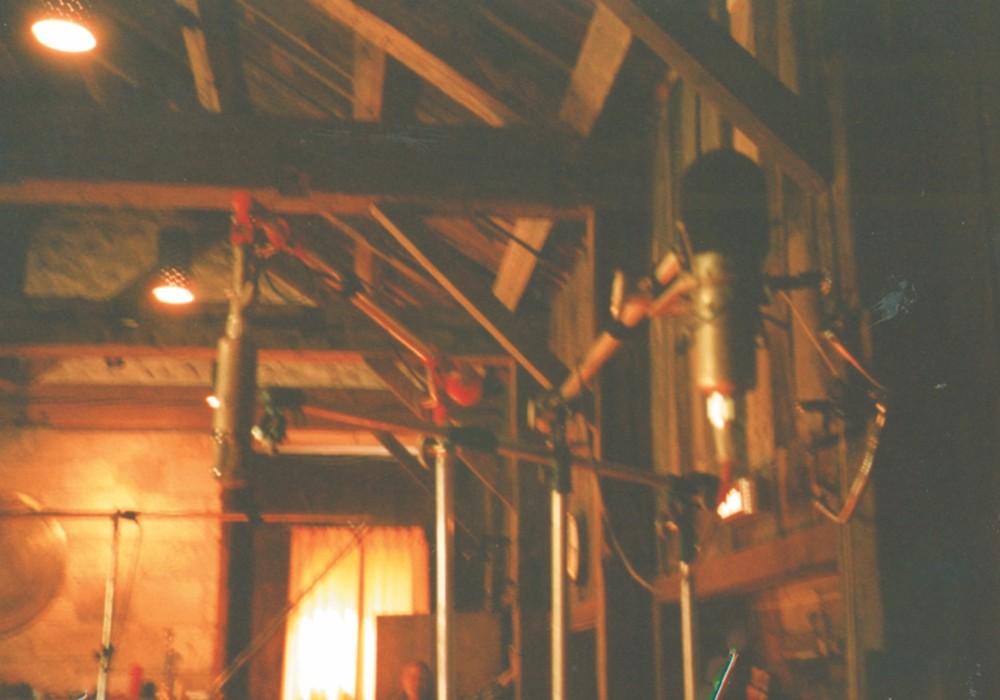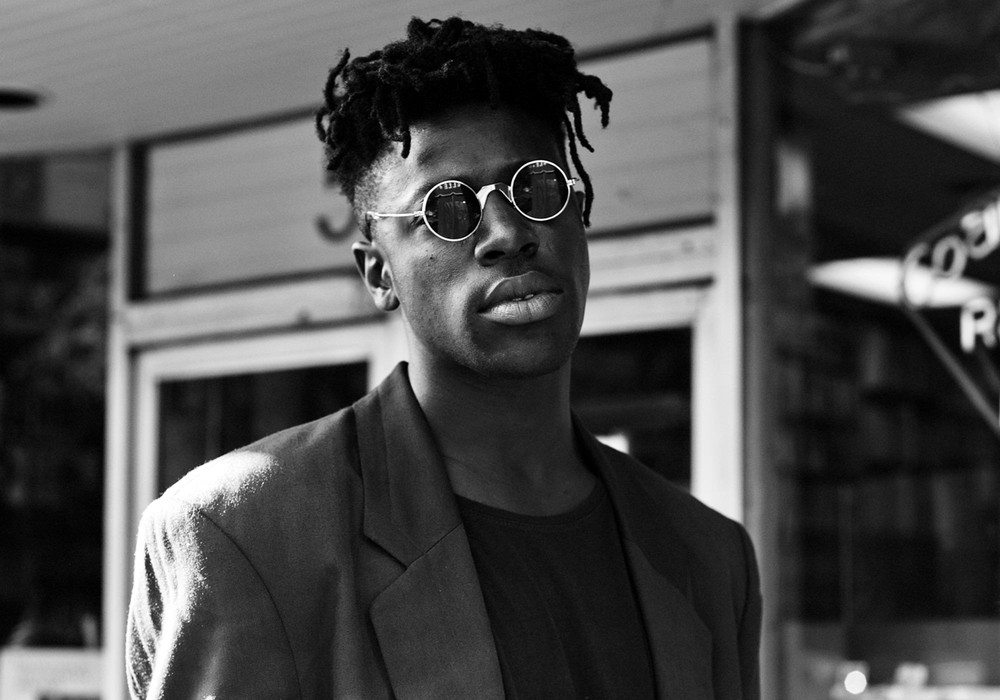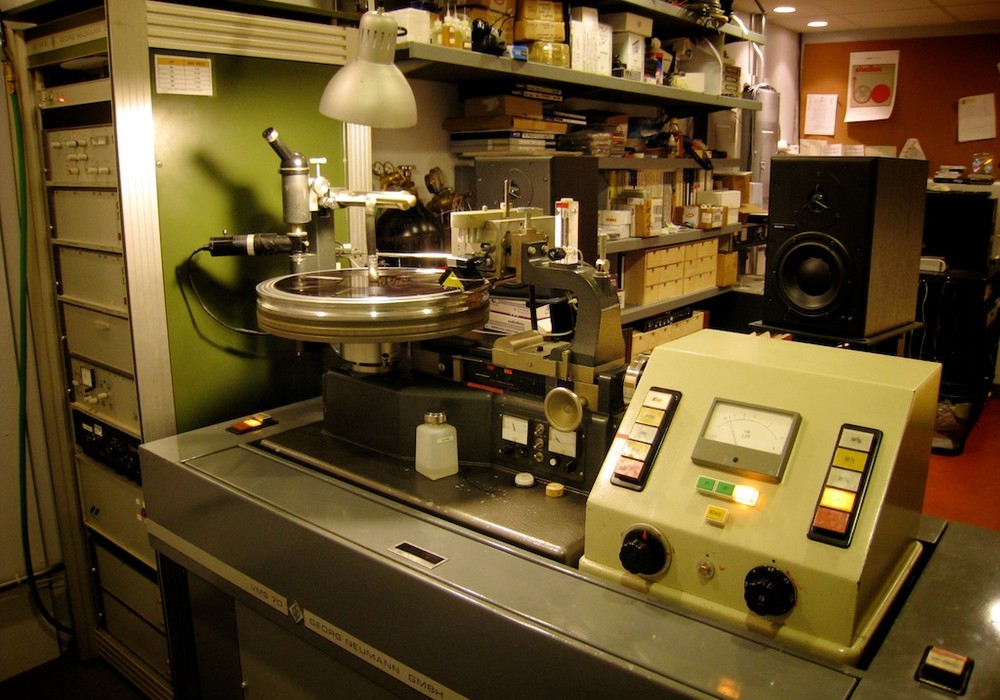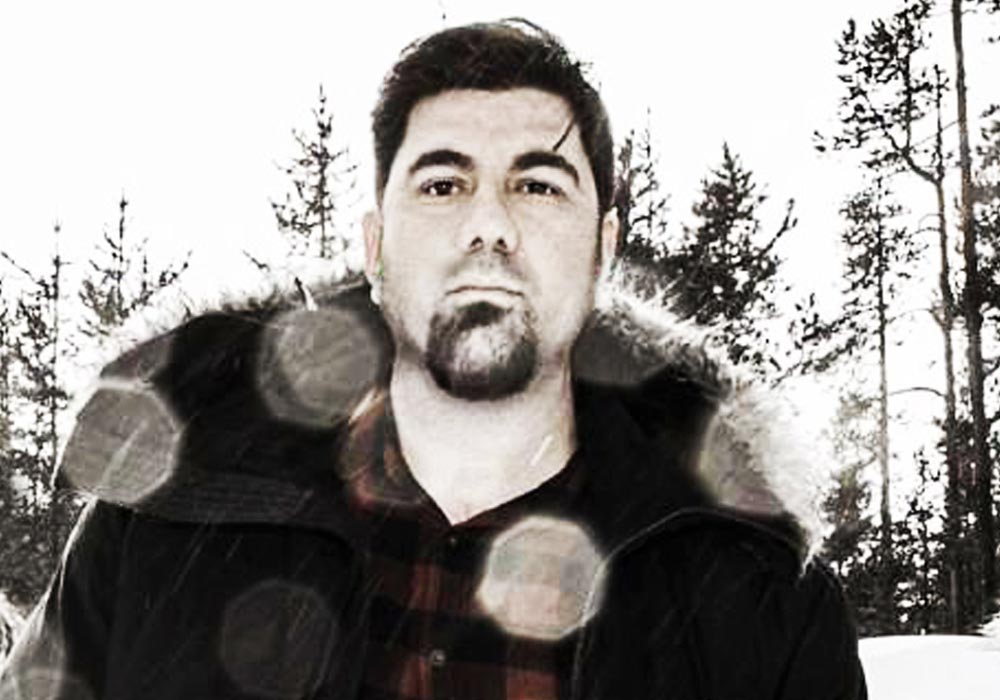Housed in a former bakery in Chicago's Andersonville neighborhood is the Experimental Sound Studio. ESS has been a staple of Chicago's art and music scene for nearly 16 years with a unique purpose. It is a not-for-profit organization committed not only to making a recording studio available and affordable to the public, but to teaching people the skills to do it themselves through workshops. Each year ESS hosts a festival and allows six local artists free studio time through its Artists in Residency program. I sat down with Lou Mallozzi — artist, educator, founding member and Director of ESS — to talk about the history, purpose and facilities of ESS.
Lou, I thought maybe we'd start by talking about some of the projects that have come through ESS.
There have been quite a few notable projects. Gastr del Sol recorded a fair amount of their first record here. That was with John McEntire, because John worked as a freelance engineer for us when he first moved to Chicago. Jim O'Rourke worked as an engineer for us and did a bunch of early recording here as well — some of the Illusion of Safety stuff that he worked on was recorded here. He also produced one of the Sounds From Chicago [radio series produced and distributed by ESS until 1996] programs, too, featuring "industrial" music. More recently we've done a bunch of CD projects: Fred Lonberg-Holm's solo CD, Scratch Music, and his Terminal 4 project was mixed and mastered here. Ribbon Effect have done their recordings here and your record.
Yeah, all of my stuff has been done here. Hal Rammel, a lot of his stuff has been recorded here. John Corbett and Heavy Friends was recorded here, and his next two records are going to be done here as well. He's also done a record with Davey Williams here called Humdinger, a really nice duet record. There was actually a short animated film called Stubble Trouble by a local animator named Joe Meredith that I composed and designed the soundtrack for here, and that got an Academy Award nomination this year for short animation. So an enormous number of projects of a lot of different territories, from indie rock to post rock to improvised music to more electronic stuff to cinema soundtracks.
Maybe you can talk a little about when and why ESS was founded.
ESS was founded in 1986 by a small group of artists and administrators. It was formed at that time in response to the fact that there were no really affordable production facilities in Chicago for artists and people who were doing experimental kinds of work in audio. That was just before the home project studio really got entrenched and it was well before desktop audio, so the assembly of some simple multi-track gear and a space to work in, and people who sort of knew what they were doing technically, that was a rare thing. Before that you pretty much had to go to a commercial studio. So it was partly out of that impetus. But as soon as we got together and formed this entity it became clear that another part of why we were doing this was to try to get information exchanged among people, which led us to developing workshops, either technical workshops or visiting artist situations where we would bring someone in from out of town and then they would do a workshop on whatever they were working on. One of the first people was Nic Collins, around 1987, who talked about his real-time sampling stuff, and we also brought Elliott Sharp, who did workshops on algorithmic composition. And when George Lewis moved back to the States we sponsored his first concert and a workshop on interactive computer music.
Initially it just started with people pooling equipment?
Pooling equipment and time and their knowledge. I think one of the things that is really important is that usually these situations are spoken about as collections of things or places, like, "People got together and pooled their equipment in a space." But it is actually the pooling of other kinds of human resources at the same time, it was a group of artists doing it, but it was also with an experienced administrator who had already done work in the non-profit sector. So we had artistic expertise, technical expertise and administrative expertise, and that's an important thing. That would be the only reason for it to become an organization. From the start we wanted to form a nonprofit organization that would become some sort of entity that would grow over time. It was that pooling of equipment and resources that then became a place of formulating programs. So it was a recording facility, initially a 4-track cassette, then eventually 8-track analog, then hard disk, but it became a workshop facility as well. One of the first things we did, in 1986, was an exhibition and performance series that we organized with Randolph Street Gallery at their space. So right from the beginning we had the core of all of the activities that we were doing. It was never our intention to do everything ourselves. It was like, "Let's find out what we can do, what expertise we can bring, and then partner with different people and organizations to make things work." It was also never our intention to grow very big. We wanted to grow very slowly and just become big enough to do whatever we needed to do, to balance ambition with prudence.
I'm curious about the benefits or drawbacks of being not-for-profit. I'm wondering if you think it helps or hinders the studio.
It totally depends on what your expectations are and what you want to accomplish. I think that these formations of ad hoc groups that seem to be so much more prevalent right now is really a much more viable solutionÉ When you start a not-for-profit, what you have access to are philanthropic avenues. It can be a very lugubrious structure — you are very accountable — to your funders, your constituency. You are a public organization. Nobody owns ESS. If I decide to stop being director, it's not like I take the equipment and go home. It's not mine. It doesn't belong to anybody. It belongs to everybody. What it does mean is that you are committed as an organization to a long-term program of trying to execute your mission. For us, forming in the Ô80s, it was a much more viable model. I think that what happens is, especially [among] younger artists, they look at the nonprofit model and they think, "Oh, this is great. We don't have to pay taxes. We can apply for grant money!" It doesn't work that way. There are places in this world that have had guaranteed funding for forty years that are now more or less falling apart in terms of their funding systems. The U.S. is one of the worst, anyway, and it's not getting much better. Philanthropy has gone up in the past couple of years, and especially since September 11th, but cultural funding hasn't gone up. That's philanthropy, which is primarily in the social service sector.
ESS is probably best known as a studio.
One of the major components of our organization is our recording facility. They are rented just like any commercial studio would rent, but our rates tend to be much lower because we subsidize them through grants. But that does a couple of things: It provides production facilities for people who need them, and for the organization it provides a source of earned income so we aren't entirely grant-dependent.
Can you run us through the studios?
We have two studios — one primarily for live recording, which has a 16-track Pro Tools system with a Mackie 24-channel board, some outboard gear, and we also have an 8-track analog Revox machine, and an assortment of microphones. The other studio is also a Pro Tools system. It's 8-track. Both are older systems, we're running version 4.0 and we're running it on NuBus computers. It's quite ancient technology, but extremely stable. We've been pursuing the possibility of upgrading and it comes down to [the fact that] it's going to cost money. It's going to cost eight or ten thousand dollars to replace one of those systems, to go to a newer Pro Tools system, because what we are running are TDM systems. These aren't LE or Digi001, and we need that TDM environment because of the kind of work we want people to be able to do.
How have those facilities changed?
We've tried to keep redesigning these facilities based on what artists need from a space like ours, so now that desktop recording is much more available, it means that there are things that we used to offer that really don't matter anymore. About eight or ten years ago, we got rid of any MIDI equipment that we had because anyone dealing with MIDI was pretty much assembling their own rig. It didn't make sense for us, as a studio, to try to keep up with that technology. It became clear that what was more useful to people was something like a good hard disk system, like a Pro Tools system, so we turned our attention away from MIDI and towards building more of a project studio.
I would think that having an isolation booth would be a big draw..
Yeah, that is a major thing. Someone donated this 6 x 8-foot isolation booth. It was probably made in the Ô70s. But what it means is, you know, not a lot of people have a place where they can do isolated recordings of any kind.
Especially bedroom recorders.
Yeah, It's very difficult to do. If you live in the city it's very hard. Our space is relatively sound-isolated already, just because of the structure of the building. And then to have that isolation booth, which is big enough to put a drum kit in, it's great. I've actually recorded trios in that booth, if I wanted a really close sound with people. I recorded a duet record for John Corbett called Twofer and part of the record is him and Torsten Mueller on bass and the other part is him and Fred Lonberg-Holm on cello. I recorded those by just putting the two of them in the booth and close-mic'ed them and it gave a nice dry, intimate sort of sound. The other thing that it is great for is voiceover stuff. We've been doing a lot more work with people who are film/video folks, and the ability to do really good controlled voiceover recording, especially in that world of cinema, is a real plus and not an easy thing to find for independent filmmakers with limited budgets. In 2000 we redesigned the studios again in response to what artists wanted in Chicago. We optimized our live space by putting in a separated control room, moving the isolation booth to a second space so it's a double isolated space and adding the second room. So we were able to build the smaller space that was optimized for soundtrack work, where we can lock to picture, and also for doing mastering. Those are the areas that people didn't have access to in their home studios.
And you've set it up so the booth can be accessed from either studio.
Yes, so if we are doing film work and need a voice over or ADR we can do it in the booth. It's worked out very well. The other thing that does is — since we are a multiple use facility where we are doing workshops, projects with artists, artists doing residencies, and with people using the studio on a rental basis — it makes it easier for us to schedule things and to do programs that don't bring in money without us feeling like we are losing money by using the studio for them. For example, when we offer a workshop, the workshops are priced extremely low. They really don't even break even, and that means that the studio is being used for the workshop and not generating income. Having the situation now, we can schedule workshops in one studio and have paying sessions in the other. Another thing about the way the studios are designed is that we allow people to engineer for themselves. In fact, we even encourage that. If someone has proficiency on the equipment and has demonstrated their personal responsibility, they can engineer for themselves in our facility. They are designed so people can step in pretty quickly. They're not mysterious. They aren't eccentric.
Do a lot of people do that?
Not a lot. Maybe ten percent.
What sort of work do people do at the studio?
Anyone can use the studio — from students to people doing folk music recordings, to rock bands, to improvising musicians, to electro-acoustic people, to people doing audio art, radio productions, installations. It's a really broad range, a broad stylistic range and a broad range of sophistication. One of the things our studio attracts is people who have never done anything in a recording studio, because we are a very un-intimidating entity, that's one of our reasons for being here: to demystify this to people, to make it more comfortable for them to do their work.
What about the emphasis on experimental work?
You don't have to pass an art test to record at ESS, because we are open completely to the public. When we do programs, though — like our The Outer Ear Festival or our Artists Residency Program — those programs are oriented towards exploratory kinds of approaches, and I think that is something that works pretty well.
Even some of the workshops?
Oh yeah, even the way some of the technical workshops are conducted. They give people useful technical information, no matter how they are working, but they don't necessarily reinforce convention. It's not, "Here is what you have to do to make a record that sounds like a really good pop record." It's like, "When you do a pop recording, here is what happens, but here is another alternative, and, in any case, this is what you are doing technically."
You can play with it.
Right. You're not bound by the technology to act in a certain way. The problem is the marketing of that technology usually says, "You can be as creative as you want with our tools," and yet the examples they hold up are the most conventional and least interesting. They might be beautifully crafted, but not artistically interesting. We have this kind of mix going on at the studio, which is great. What happens is that, if we do programs that are about experimentation, people who are coming to the studio who are much more conventional are exposed to those kinds of programs they otherwise wouldn't know about. It opens them up. You tell them about the festival and they show up and it's, like, the week before they had no idea who Tony Conrad was. And they come and they hear Tony Conrad and they go, "Wow, that was really cool." They may go back and still write folk songs, but that's not the point. Their ears get opened up. That's the kind of thing that, if you're writing a grant, you can't quantify. It's completely anecdotal.
What is it about the Artists in Residency program that's a really unique opportunity?
That program is specifically for local artists to make new work in the recording studio, and it's divided into categories that speak to these different ways of working that we are trying to promote. So there is a sound works category, but there is also a category specifically for doing soundtracks for film and video. There is one that's about performing arts collaboration, and one for work in radio.
There is no requirement that anyone has any experience in the studio?
No. An application can be from someone who isn't a sound artist. That is certainly viable. If their artistic experience and vision has substance, then most likely the jury will look favorably upon them.
And there is also an emphasis on utilizing the studio.
Yeah, we're trying to make the residency program be a way that the recording process is very directly implicated in the execution of the work and its concept. It isn't a means to an end. As a kind of document making, it's a part of the work. That work could not exist outside of this process — recording as part of the creative act.
www.expsoundstudio.org
Interviews | No. 133
The Making of The National's "I Am Easy to Find"
by John Baccigaluppi
The National are a musical group who have been together for 20 years, have released multiple critically acclaimed albums, all while retaining the same lineup for the entire time. The band consists of...
